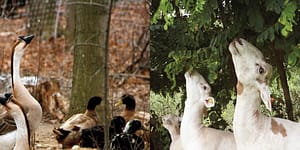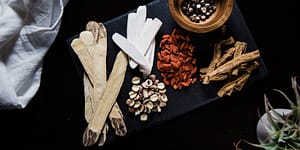The Birth of Electricity

Electricity has shaped the modern world. But how has it affected our health and environment?
Scientist and journalist Arthur Firstenberg tells the story of electricity in a way it has never been told before—from an environmental point of view—by detailing the effects that this fundamental societal building block has had on our health and our planet.
The following is an excerpt from The Invisible Rainbow by Arthur Firstenberg. It has been adapted for the web.
The experiment of Leyden was a craze that was immense, universal: everywhere you went people would ask you if you had experienced its effects. The year was 1746. The place, any city in England, France, Germany, Holland, Italy. A few years later, America.
Like a child prodigy making his debut, electricity had arrived, and the whole Western world turned out to hear his performance.

Line engraving from Mémoires de l’Académie Royale des Sciences Plate 1, p. 23, 1746
His midwives—Kleist, Cunaeus, Allamand, and Musschenbroek— warned that they had helped give birth to an enfant terrible, whose shocks could take away your breath, boil your blood, paralyze you. The public should have listened, been more cautious. But of course the colorful reports of those scientists only encouraged the crowds.
Pieter van Musschenbroek, professor of physics at the University of Leyden, had been using his usual friction machine. It was a glass globe that he spun rapidly on its axis while he rubbed it with his hands to produce the “electric fluid”—what we know today as static electricity. Hanging from the ceiling by silk cords was an iron gun barrel, almost touching the globe. It was called the “prime conductor,” and was normally used to draw sparks of static electricity from the rubbed, rotating glass sphere.
But electricity, in those early days, was of limited use, because it always had to be produced on the spot and there was no way to store it. So Musschenbroek and his associates designed an ingenious experiment—an experiment that changed the world forever: they attached a wire to the other end of the prime conductor and inserted it in a small glass bottle partly filled with water. They wanted to see if the electric fluid could be stored in a jar. And the attempt succeeded beyond their wildest expectations.
“I am going to tell you about a new but terrible experiment,” Musschenbroek wrote to a friend in Paris, “which I advise you never to try yourself, nor would I, who have experienced it and survived by the grace of God, do it again for all the Kingdom of France.” He held the bottle in his right hand, and with the other hand he tried to draw sparks from the gun barrel. “Suddenly my right hand was hit with such force, that my whole body shook as though struck by lightning.
The glass, although thin, did not break, and my hand was not knocked away, but my arm and whole body were affected more terribly than I can express. In a word, I thought I was done for.”1 His companion in invention, biologist Jean Nicolas Sébastien Allamand, when he tried the experiment, felt a “prodigious blow.” “I was so stunned,” he said, “that I could not breathe for some moments.” The pain along his right arm was so intense that he feared permanent injury.2
But only half the message registered with the public. The fact that people could be temporarily or, as we will see, permanently injured or even killed by these experiments became lost in the general excitement that followed. Not only lost, but soon ridiculed, disbelieved, and forgotten. Then as now, it was not socially acceptable to say that electricity was dangerous. Just two decades later, Joseph Priestley, the English scientist who is famous for his discovery of oxygen, wrote his History and Present State of Electricity, in which he mocked the “cowardly professor” Musschenbroek, and the “exaggerated accounts” of the first experimenters.3
Its inventors were not the only ones who tried to warn the public. Johann Heinrich Winkler, professor of Greek and Latin at Leipzig, Germany, tried the experiment as soon as he heard about it. “I found great convulsions in my body,” he wrote to a friend in London. “It put my blood into great agitation; so that I was afraid of an ardent fever; and was obliged to use refrigerating medicines. I felt a heaviness in my head, as if I had a stone lying upon it. It gave me twice a bleeding at my nose, to which I am not inclined. My wife, who had only received the electrical flash twice, found herself so weak after it, that she could hardly walk. A week after, she received only once the electrical flash; a few minutes after it she bled at the nose.”

The general public did not react as he planned, however. After reading reports like Musschenbroek’s in the proceedings of France’s Royal Academy of Sciences, and his own in the Philosophical Transactions of the Royal Society of London, eager men and women by the thousands, all over Europe, lined up to give themselves the pleasure of electricity.
Abbé Jean Antoine Nollet, a theologian turned physicist, introduced the magic of the Leyden jar into France. He tried to satisfy the insatiable demands of the public by electrifying tens, hundreds of people at once, having them take each other by the hand so as to form a human chain, arranged in a large circle with the two ends close together.
He would place himself at one of the ends, while the person who represented the last link took hold of the bottle. Suddenly the learned abbot, touching with his hand the metal wire inserted in the flask, would complete the circuit and immediately the shock would be felt simultaneously by the whole line.
Electricity had become a social affair; the world was possessed, as some observers called it, by “electromania.”
Notes
1. Musschenbroek 1746.
2. Letter from Allamand to Jean Antoine Nollet, partially quoted in Nollet 1746b, pp. 3-4; summarized in Trembley 1746.
3. Priestley 1767, pp. 82-84.
Recommended Reads
Recent Articles
Have you heard of silvopasture? This system of managing grazing animals is an ancient practice that integrates trees and pasture into a single system for raising livestock. These systems are managed for both forest products and forage, providing short-and long-term income sources in a mutually beneficial way for healthier animals, better soil, less pest control and mowing, and…
Read MoreLearning how to ask questions that will elicit relevant information is as much an art form as creating an herbal formula. Follow this broad list as a starting point.
Read MoreOxeye daisies are one of the most important plants for pollinators including beetles, ants, and moths that use oxeye daisies as a source of pollen and nectar. Instead of thinking about removing a plant like oxeye daisy, consider how you can improve the fertility and diversity of habitat resources in your home landscape, garden, or…
Read MoreWant to start your own medicinal herb garden? Passionflower, lemon balm, and goldenseal are great places to begin! These herbs are jam-packed with medicinal properties and easy to grow in a majority of climates.
Read More








